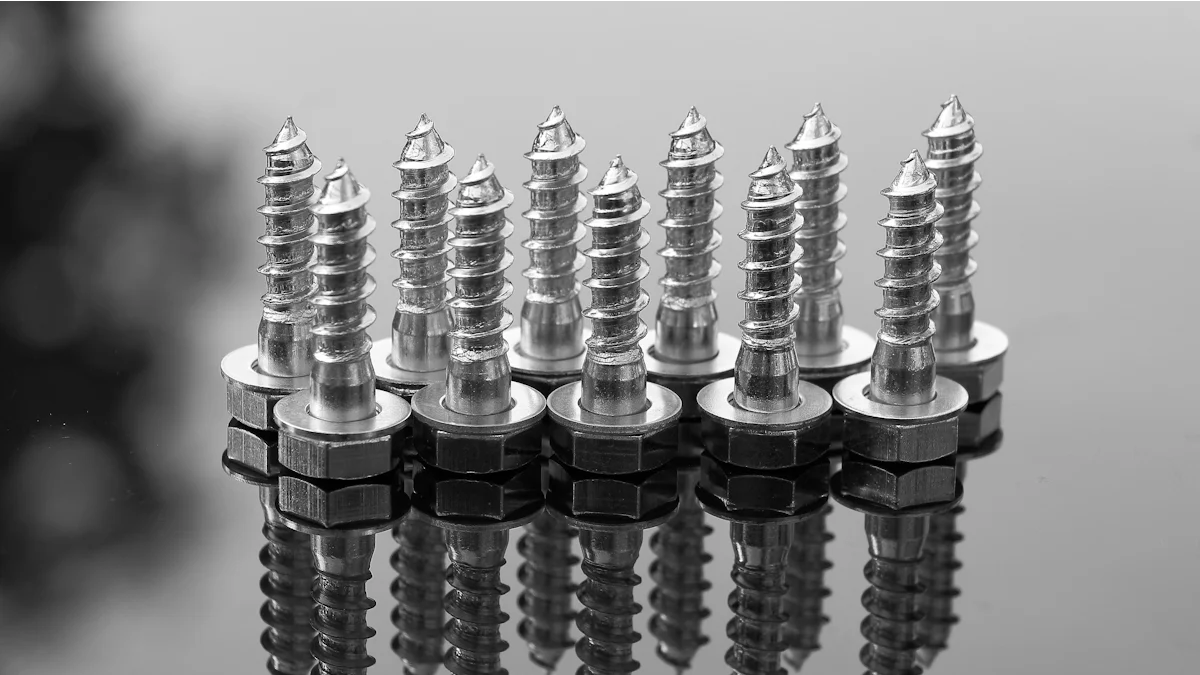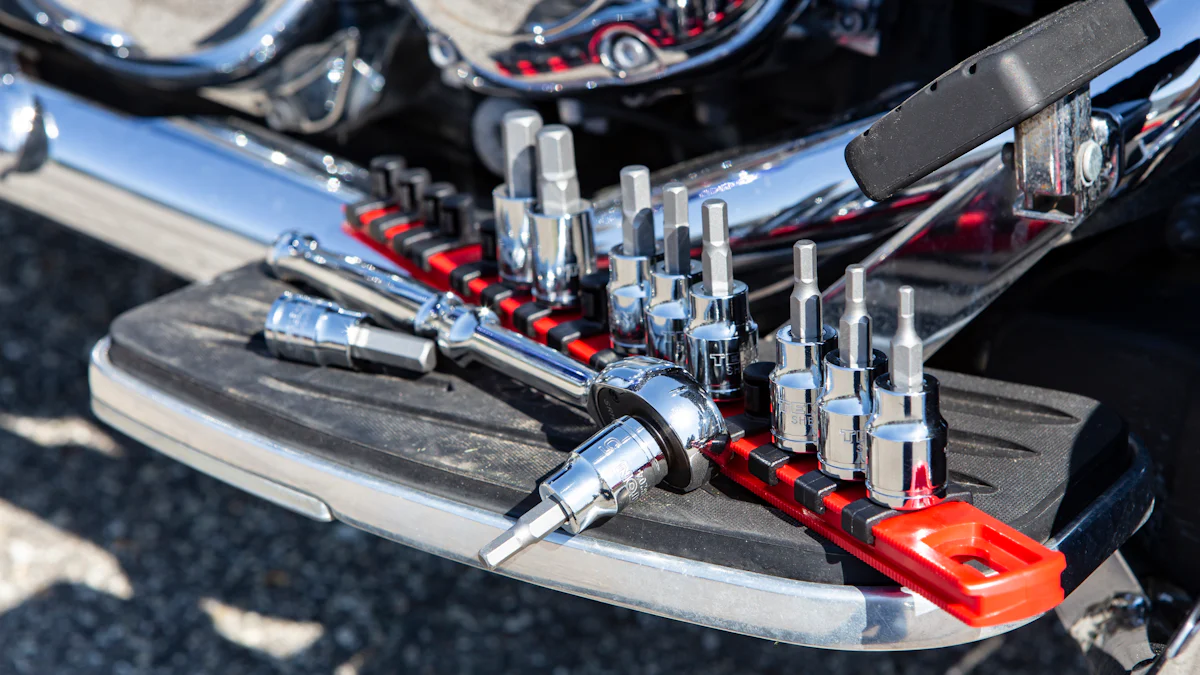
Tamper-resistant screws play a crucial role in securing valuable assets from tampering or theft. These specialized fasteners dominate the market due to their versatility and effectiveness. Industries such as electronics, automotive, and public infrastructure rely heavily on tamper-resistant screws to enhance security protocols. The use of screw spanner heads in these fasteners ensures that only authorized personnel can access sensitive components. By preventing unauthorized entry, tamper-resistant screws save thousands of dollars annually by reducing vandalism and theft.
Understanding Tamper-Resistant Screws
What Are Tamper-Resistant Screws?
Definition and Purpose
Tamper-resistant screws, also known as security fasteners, are designed to prevent unauthorized access or tampering. These screws feature unique drive styles that require specialized tools for installation and removal. The primary purpose of tamper-resistant screws is to secure valuable assets and sensitive components from theft or vandalism.
Common Types and Variants
Several types of tamper-resistant screws exist, each with distinct features. Common variants include:
- Pin-in-Hex: Features a pin within the hexagonal socket, requiring a special insert bit for removal.
- Spanner Head: Utilizes two holes on the head, necessitating a screw spanner tool for installation.
- Torx Security: Incorporates a pin in the center of the Torx drive, demanding a matching tool for access.
- One-Way Screws: Designed to be installed with a standard screwdriver but cannot be removed without specialized equipment.
Key Features and Benefits
Security and Safety
Tamper-resistant screws offer enhanced security by deterring unauthorized access. The unique drive styles make it difficult for standard tools to remove these fasteners. This added layer of security helps protect sensitive equipment and valuable assets from tampering and theft.
Durability and Strength
Manufacturers design tamper-resistant screws to withstand harsh conditions. These screws often use high-quality materials like stainless steel or hardened alloys. This ensures durability and strength, making them suitable for various applications, including outdoor and high-stress environments.
Industries and Applications
Electronics and Technology
The electronics industry relies heavily on tamper-resistant screws to protect devices and components. These screws prevent unauthorized access to internal parts, safeguarding sensitive equipment from tampering or damage. Common applications include securing circuit boards, enclosures, and other critical components.
Automotive and Aerospace
In the automotive and aerospace sectors, tamper-resistant screws play a vital role in securing critical components. These industries use screw spanner heads to ensure only authorized personnel can access and maintain essential parts. This prevents unauthorized modifications and enhances overall safety.
Public Infrastructure and Utilities
Public infrastructure and utilities benefit significantly from tamper-resistant screws. These fasteners help secure public assets such as streetlights, benches, and utility boxes. By preventing unauthorized access, tamper-resistant screws reduce vandalism and maintenance costs, ensuring the longevity and reliability of public infrastructure.
Sourcing and Customization
Finding Reliable Suppliers
Criteria for Selection
Selecting a reliable supplier for tamper-resistant screws requires careful consideration. Look for suppliers with a proven track record in the fastener industry. Companies like Fastenright and Bryce Fastener have established themselves as market leaders. Evaluate the supplier’s product range, focusing on the availability of various types of tamper-resistant screws, including those with screw spanner heads. Ensure the supplier offers high-quality materials and innovative solutions.
Customer service plays a crucial role in the selection process. A supplier should provide excellent support, from initial inquiries to after-sales service. Consider the supplier’s ability to meet specific requirements, such as custom designs or bulk orders. Reliability in delivery times and consistency in product quality are essential factors.
Recommended Suppliers
Several companies excel in providing tamper-resistant screws:
- Fastenright: Known for a wide range of security fasteners and exceptional customer service.
- Bryce Fastener: Offers unique and patented security fasteners, ensuring high-level security.
- Anzor Fasteners: Continuously introduces innovative drives to enhance security against theft and vandalism.
- PCC Fasteners: Specializes in high-quality products for industries like aerospace and automotive.
Customization Options
Material Choices
Tamper-resistant screws come in various materials to suit different applications. Stainless steel remains a popular choice due to its corrosion resistance and durability. For high-stress environments, hardened alloys provide additional strength. Some suppliers offer screws with specific coatings or platings to enhance performance in particular conditions.
Material science advancements have led to the development of specialized alloys. These materials offer enhanced security and durability. Companies like Anzor Fasteners invest in research and development to create application-specific solutions. Consider the environmental conditions and stress factors when selecting the material for tamper-resistant screws.
Design and Size Variations
Customization options extend beyond material choices. Tamper-resistant screws are available in various designs and sizes to meet specific needs. Common designs include pin-in-hex, spanner head, and Torx security. Each design requires a unique tool for installation and removal, adding an extra layer of security.
Size variations allow for precise fitting in different applications. Whether securing electronic devices or public infrastructure, selecting the appropriate size ensures optimal performance. Suppliers like Fastenright and Bryce Fastener offer a wide range of design and size options. Custom designs can be requested to meet specific security requirements.
Installation and Maintenance

Proper Installation Techniques
Required Tools and Equipment
Proper installation of tamper-resistant screws demands specific tools. The unique drive styles of these screws necessitate specialized equipment. For example, a screw spanner tool is essential for installing spanner head screws. Other tools include:
- Pin-in-Hex Insert Bits: Required for pin-in-hex screws.
- Torx Security Drivers: Necessary for Torx security screws with center pins.
- One-Way Screw Removers: Needed for removing one-way screws.
High-quality tools ensure secure installation and prevent damage to the screws or the components they protect.
Step-by-Step Guide
- Select the Appropriate Screw: Choose the correct type and size of tamper-resistant screw for the application.
- Gather Necessary Tools: Ensure all specialized tools, such as the screw spanner, are available.
- Prepare the Surface: Clean the area where the screw will be installed to ensure a secure fit.
- Align the Screw: Position the screw in the designated hole.
- Use the Specialized Tool: Insert the appropriate tool into the screw head.
- Apply Steady Pressure: Turn the tool clockwise to tighten the screw securely.
- Check the Fit: Verify that the screw is flush with the surface and firmly in place.
Following these steps ensures a secure installation, preventing unauthorized removal or tampering.
Maintenance Tips
Regular Inspections
Regular inspections are crucial for maintaining the integrity of tamper-resistant screws. Inspect the screws periodically to ensure they remain secure and undamaged. Look for signs of wear, corrosion, or tampering. Pay special attention to screws in high-stress environments or exposed to harsh conditions.
- Visual Checks: Examine the screw heads for any visible damage or tampering attempts.
- Torque Testing: Use a torque wrench to check if the screws maintain the required tightness.
- Environmental Assessment: Evaluate the surrounding conditions to identify potential factors that could affect the screws’ performance.
Troubleshooting Common Issues
Addressing common issues promptly can extend the lifespan of tamper-resistant screws. Here are some troubleshooting tips:
- Loose Screws: Retighten using the appropriate tool, such as a screw spanner for spanner head screws.
- Corrosion: Replace corroded screws with new ones made from corrosion-resistant materials like stainless steel.
- Damaged Heads: If the screw head is damaged, use a specialized removal tool to extract the screw and replace it with a new one.
These maintenance practices ensure that tamper-resistant screws continue to provide effective security and protection.
Case Studies and Real-World Examples

Successful Implementations
Case Study 1: Electronics Industry
The electronics industry often faces challenges related to unauthorized access and tampering. A leading electronics manufacturer implemented tamper-resistant screws to secure internal components of high-end devices. The company selected Torx security screws with center pins for this purpose. These screws required specialized tools for installation and removal.
The implementation led to a significant reduction in unauthorized repairs and modifications. The manufacturer reported a 30% decrease in warranty claims related to tampering. The use of tamper-resistant screws also enhanced the overall product reliability. Customers expressed higher satisfaction due to the increased security of their devices.
Case Study 2: Public Infrastructure
Public infrastructure projects often encounter issues with vandalism and unauthorized access. A city council decided to use tamper-resistant screws to secure streetlights, benches, and utility boxes. The council chose spanner head screws for their unique drive style, which required a screw spanner tool for installation.
The initiative resulted in a noticeable decline in vandalism incidents. Maintenance costs dropped by 25% as fewer repairs were needed. The public infrastructure remained intact and functional for longer periods. Residents appreciated the improved condition and reliability of public assets.
Lessons Learned
Best Practices
Implementing tamper-resistant screws requires adherence to best practices. First, selecting the appropriate type and size of screws for the specific application is crucial. Using high-quality materials like stainless steel or hardened alloys ensures durability and strength. Regular inspections help maintain the integrity of the screws and prevent potential issues.
Proper installation techniques play a vital role in the effectiveness of tamper-resistant screws. Using the correct tools and following a step-by-step guide ensures secure installation. Training authorized personnel on the use of specialized tools enhances the overall security.
Common Pitfalls to Avoid
Several common pitfalls can undermine the effectiveness of tamper-resistant screws. One major issue involves using standard tools for installation or removal. This practice can damage the screws and compromise security. Always use the specialized tools designed for the specific type of tamper-resistant screw.
Another common mistake involves neglecting regular inspections. Failing to check the screws periodically can lead to undetected tampering or wear. Addressing issues promptly extends the lifespan of the screws and maintains their security benefits.
Ignoring environmental factors can also pose problems. Selecting the wrong material for harsh conditions can result in corrosion or damage. Always consider the specific requirements of the application when choosing tamper-resistant screws.
Tamper-resistant screws provide significant security benefits across various industries. These fasteners deter tampering, theft, and vandalism, ensuring the protection of valuable assets. Implementing the discussed methods will enhance security protocols and reduce maintenance costs.
“The use of security screws in critical and sensitive areas is highly advantageous as it is a simple deterrent for vandals and criminals.” — Zago
The future of tamper-resistant fasteners looks promising. Growing awareness of security concerns drives demand for these innovative solutions. Investing in tamper-resistant screws today will safeguard assets and infrastructure for years to come.
See Also
Scooter Upgrades: High-Quality Parts for Optimal Performance
Men and Women’s Sock Selection: A Diverse Range
